
views
Measuring With Your Body

Sit down on the fitness ball. Distribute your weight evenly and keep your feet flat on the floor. If the ball’s the right size for you, your hips and knees should both be bent at about 90 degrees, and your thighs should be horizontal. Your upper body should be vertical with your ears, shoulders and pelvis aligned. Don’t lean in any direction to avoid creating a counterbalance.
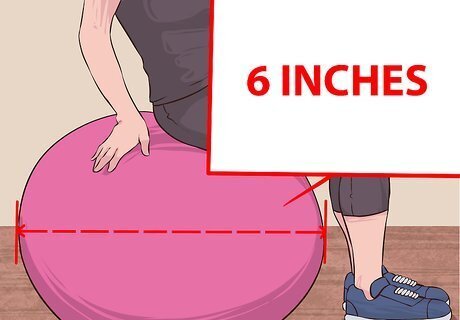
Check for proper compression. It's not enough for the ball to fit your body; it also needs to be properly inflated. A properly inflated fitness ball should compress about 6 inches when you sit on it. If the ball fits your body but compresses more than 6 inches beneath you, it's not the right size ball for you; it's a larger ball that's been under-inflated. You can exercise on such a ball, but may find that the extra-soft ball feels awkward and makes balancing too easy. Don't over-inflate a smaller ball to make it fit your body; the extra pressure makes it more likely to burst. When fully inflated, you should be able to press 2” into the fitness ball with your finger. Fitness balls lose pressure with use and age. As your ball ages, you may need to inflate it more often.

Check a sizing chart. Manufacturers provide fitness ball sizing charts that correlate ball diameter with body height. These are only estimates and vary widely between the various ball manufacturers. Give how the ball actually fits your body higher priority than the sizing charts. You may be able to successfully use a smaller or larger sized fitness ball as you gain experience. The size of the exercise ball depends on your height and the exercises you plan to do with it. Usually, if you are between 5 feet to 5 feet 9 inches tall, you should use a ball around 55cm. When you do a dumbbell press on an exercise ball, ensure that your feet can touch the ground firmly. Lareine Chabut Lareine Chabut, Fitness Influencer Inflate the ball to the recommended level, which is usually indicated on the ball or in the instruction manual. Also, avoid exposing the ball to extreme temperatures or chemicals, which can damage the material.
Using Measuring Tape
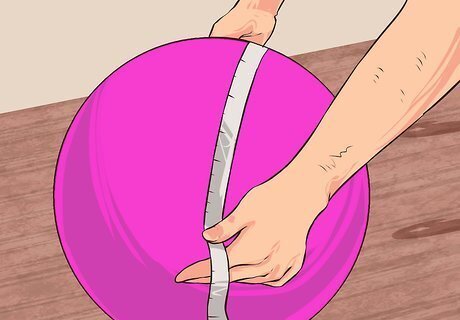
Wrap a flexible measuring tape all the way around the inflated fitness ball. Some fitness balls have concentric rings marked around the ball; use the widest of these rings around the ball's “equator” to help you align the tape correctly.
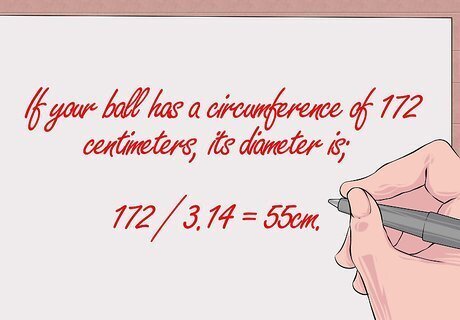
Measure the circumference of the fitness ball. Fitness ball sizes are listed in diameter (the distance straight from one side of the sphere to the opposite side, passing through the center), not circumference. Divide the circumference by pi, or 3.14, to get the diameter. For example, if your ball has a circumference of 172 centimeters, its diameter is 172 / 3.14 = 55cm. Your exercise ball may stretch up to 24 hours after you inflate it. Measure your fitness ball when it’s fully inflated to ensure it’s the right size for your body.
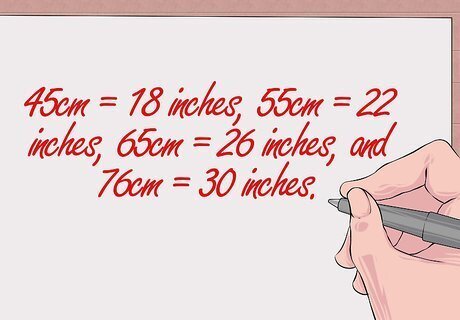
Convert your measurement. Fitness ball sizes are always measured in centimeters, even in countries that usually use Imperial measurements. If you measured in inches, you'll need to make the appropriate conversion. The most common ball sizes, translated to centimeters and rounded up to the nearest inch, are: 45cm = 18 inches, 55cm = 22 inches, 65cm = 26 inches, and 76cm = 30 inches.
Measuring With a Wall
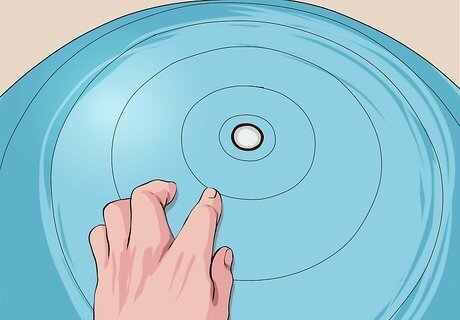
Check the ball's packaging for the ball's intended diameter. If you don't have the ball's packaging, check the ball itself; the intended size is often printed near the air valve or on the ball's "equator."

Place a large box away from the wall at a distance equaling the ball’s diameter. Use a yardstick or tape measure and make sure this distance is exact. The box you use should measure at least as high as your fitness ball.

Roll the ball between the box and the wall. If it passes through without brushing either, it's underinflated. When correctly inflated, the edges of the ball should just graze the box and the wall. If you don't know the ball's intended diameter but need to know its actual size, place the ball against the wall. Position the box so that it just touches the opposite side of the ball. Then remove the ball, and measure from the box to the wall to calculate the ball's diameter.
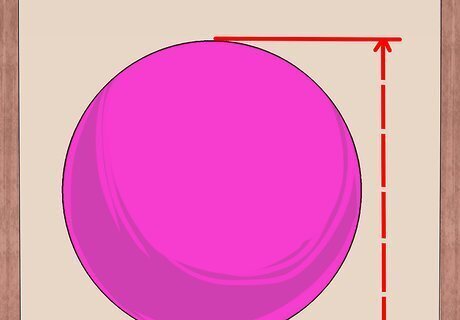
Measure the height of your fitness ball against a wall. Alternatively, you can use your ball’s height to determine whether it’s inflated correctly. Use painter’s tape and make a mark on your wall at the same height as the fitness ball’s diameter. Then, inflate your fitness ball until it’s level with this mark. The diameter of your fitness ball is the same as its height.











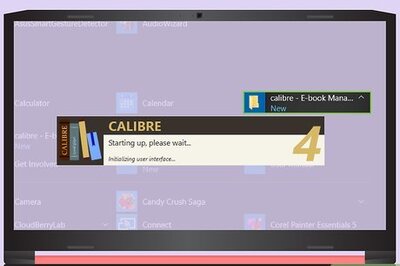





Comments
0 comment